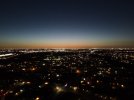Some more out-of-the-camera auto mode comparison footage.
Between this and the Pilot Institute, at least in the daylight, beginning to firm my opinion that the video quality is really close. If I freeze and blow up some areas, I can find spots where each might be slightly better, but I think overall the Air 2S video seems to have more spots where I think it "wins", so would lean the Air 2S for these auto/daylight shots. Close enough that if you don't want to spend time correcting/grading the output, you aren't going to worry about any minor differences that you need to blow up the video to see. There was one shot in the Pilot Institute video (close to the end with the blow up of the white tanker) where you saw just a tiny bit of noise/shimmer from the Mini 3 that the Air 2S didn't have. Think the point and shoot crowd will be very happy with either.
Between this and the Pilot Institute, at least in the daylight, beginning to firm my opinion that the video quality is really close. If I freeze and blow up some areas, I can find spots where each might be slightly better, but I think overall the Air 2S video seems to have more spots where I think it "wins", so would lean the Air 2S for these auto/daylight shots. Close enough that if you don't want to spend time correcting/grading the output, you aren't going to worry about any minor differences that you need to blow up the video to see. There was one shot in the Pilot Institute video (close to the end with the blow up of the white tanker) where you saw just a tiny bit of noise/shimmer from the Mini 3 that the Air 2S didn't have. Think the point and shoot crowd will be very happy with either.












